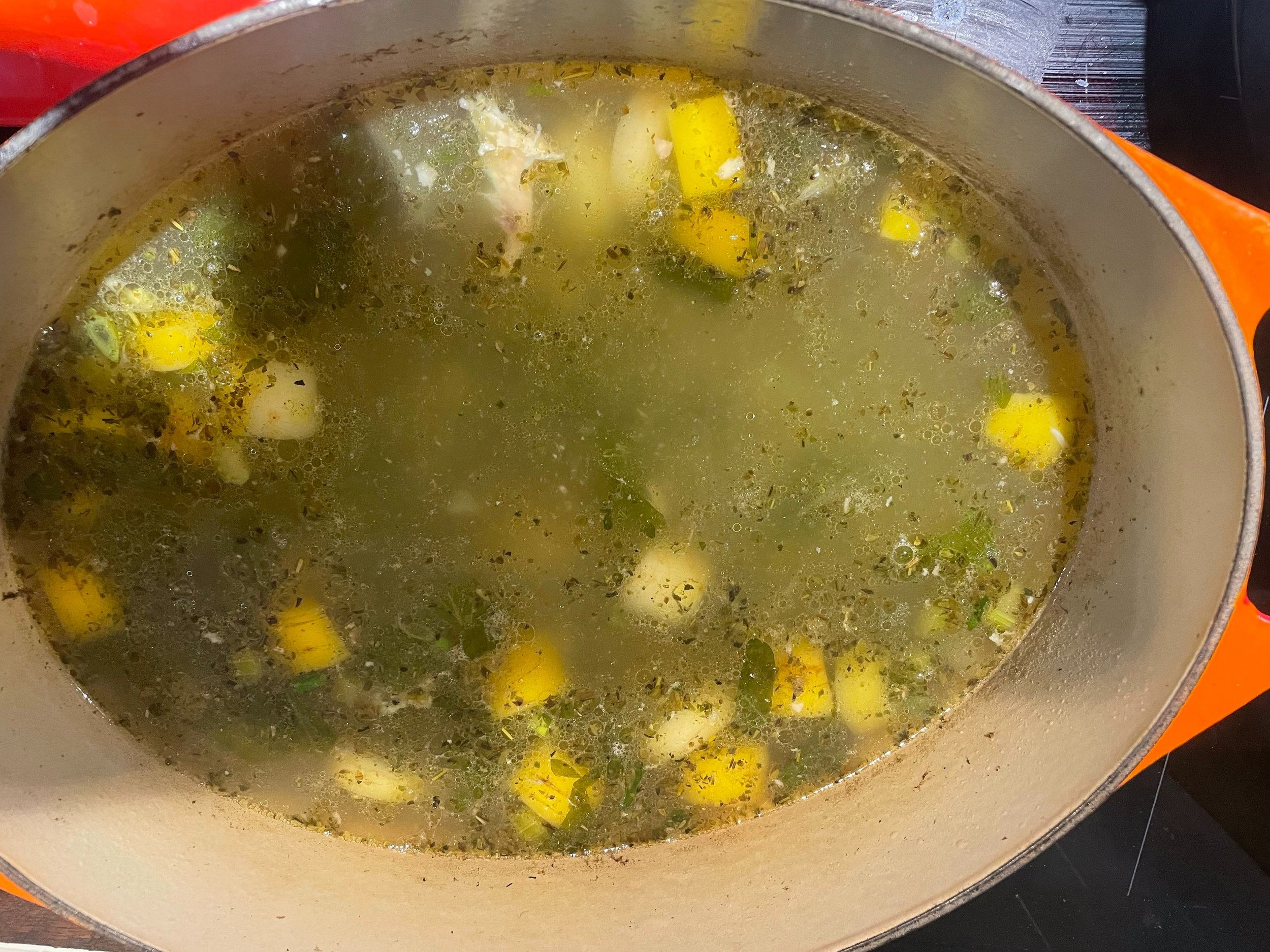Chicken and Dumplings
/We’ll all have chicken and dumplings when she comes…
Materials
One or two whole pasture-raised chickens. Giblets optional.
A large pot
Onion, carrot, celery (amount depends on what flavor you want)
Salt, whole peppercorns, herbs de Provence or some other mixture of herbs including thyme and marjoram. (Or…not, if you don’t like thyme and marjoram with chicken. You do what you want.) A few bay leaves, and or some dried mushrooms or mushroom powder would go well. Maybe soy sauce? Something for umami flavor is the idea.
Other vegetables (canned or frozen corn or peas work well)
Dumplings (see below)
Optional: grass-fed butter, green onion, parsley
Method
Put the chicken(s) in the pot and cover it with plenty of water. Simmer the chicken for several hours. A lid helps. Do not boil the chicken, this can make it tough.
Remove the chicken from the pot. Reserve the broth (which you have just made) in the pot. Let the chicken cool.
Vegetables and Broth. (Heirloom carrots, some are yellow.)
Chop onion, carrot, and celery and add to the pot with the broth. Add salt. Add a small handful of peppercorns. Add herbs or herb mix. Add bay leaves. Turn up the heat to a slow boil.
Shredded Chicken separated from bones
When the chicken is cool enough to handle, pull off the meat. Discard the bones, and the skin unless you want to eat it; optionally, save the largest, thickest bones.
Taste the broth, add salt if needed. Optionally, add the largest chicken bones back to the stock for more flavor. (You will need to remove these eventually.) Continue boiling the soup for 10-15 minutes, then reduce to a simmer.
When the carrot and celery are soft, add back in the chicken meat and any extra vegetables. We like to use sweet corn. You can cut the kernels off the cob when corn is in season and freeze it for use over the winter.
A chicken in every pot
Taste for seasoning one last time. Optionally, add in a few tablespoons of butter.
Drop dumpling batter, mixed
Add the dumplings. There are a lot of different dumpling recipes. You can use a biscuit mix from the store, you can make spaetzle, you have a lot of options. A simple drop dumpling recipe is as follows: Combine 2 cups of flour, 2 teaspoons baking powder, 1/2 teaspoon baking soda, 2 teaspoons sugar, salt, and seasonings (we use a seasoning salt). Mix together 1 cup of whole milk, a few tablespoons of melted butter, and a dash of apple cider vinegar. Fold the wet ingredients into the dry. Don’t overmix. Make sure the soup is simmering enough to create steam. Use 2 spoons to drop (thus the name) large spoonfuls of dumpling batter onto the top of the soup. Cover with a lid and simmer the dumplings 15 minutes.
Serve the dumplings right away, or they’ll begin to disintegrate into the soup (not the end of the world). Consider garnishing with green onion and fresh parsley.






